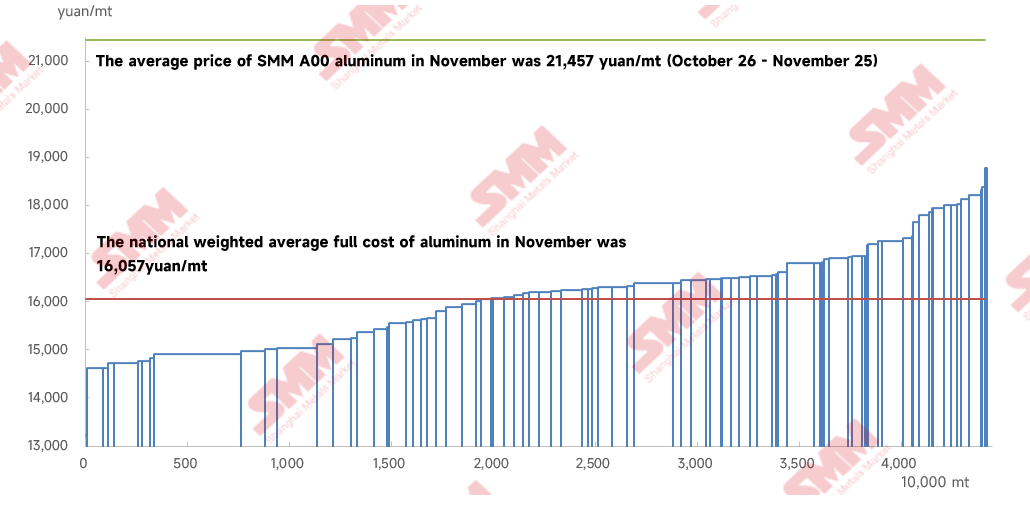Environmentalists aim to limit Trump Endangered Species Act rules – Capital Press

Report on US Endangered Species Act Regulations and Implications for Sustainable Development Goals
Introduction
A significant legal and regulatory conflict is unfolding in the United States over the implementation of the Endangered Species Act (ESA). This conflict, involving the federal government, environmental organizations, and industry groups, has profound implications for the nation’s commitment to achieving key Sustainable Development Goals (SDGs), particularly those concerning biodiversity and institutional integrity.
Background of the Regulatory Dispute
The current situation stems from a series of regulatory changes and legal challenges. The Biden administration previously enacted ESA regulations that were contested by both environmental and industry stakeholders. The succeeding Trump administration has indicated its intent to revise these rules to be more “business-friendly,” prompting pre-emptive legal action from environmental advocates. The outcome of this dispute will directly impact the framework for species protection in the United States, a critical component of the global effort to meet SDG 15 (Life on Land) and SDG 14 (Life Below Water).
Stakeholder Actions and Positions
The conflict is characterized by opposing legal strategies from key stakeholder groups, each with a different perspective on how to balance economic development with environmental conservation.
- Industry and Agriculture Sector: Led by groups like the American Farm Bureau Federation, this sector initiated litigation against the Biden-era rules. They argue that the regulations are overly burdensome, exceed federal authority, and negatively impact economic livelihoods, creating a conflict with SDG 8 (Decent Work and Economic Growth). Their lawsuit, which sought less stringent, species-specific safeguards, has been suspended in anticipation of new, more favorable regulations from the Trump administration.
- Environmental Advocacy Sector: Non-profits, including the Center for Biological Diversity, are pursuing their own litigation. They contend that existing protections are insufficient to address the global extinction crisis and that any rollback would be a direct violation of the ESA’s mandate. Their legal strategy aims to secure a court ruling that reinforces strong protections, thereby creating a legal barrier against the anticipated loosening of regulations by the administration.
Direct Implications for Sustainable Development Goals
The resolution of this conflict will have a direct and measurable impact on progress toward several SDGs.
- SDG 15 (Life on Land) & SDG 14 (Life Below Water): The core of the dispute is the level of protection afforded to threatened and endangered species and their habitats. A weakening of the ESA would represent a significant setback for halting biodiversity loss and protecting ecosystems, which are central targets of these goals. Conversely, a legal affirmation of strong protections would reinforce the national commitment to conservation.
- SDG 16 (Peace, Justice and Strong Institutions): The situation underscores the critical role of effective and accountable institutions in environmental governance. The use of the judicial system by all parties highlights its function in interpreting and upholding national laws that are essential for sustainable development. The legal precedent set by the courts will shape the institutional capacity to protect biodiversity for the foreseeable future.
- SDG 17 (Partnerships for the Goals): The conflict illustrates the challenge of reconciling the interests of different sectors—government, civil society, and private industry—within a multi-stakeholder framework. The legal battle represents a formal mechanism for resolving these differing priorities, and its outcome will influence future collaborations on environmental and economic policy.
Current Status and Outlook
As of October 2025, the legal case brought by environmental groups is proceeding, with oral arguments scheduled for the end of the month. This timeline coincides with the expected release of new, less restrictive ESA regulations by the Trump administration. Environmental advocates hope that a favorable court decision will precede the new rules, thereby legally constraining the administration’s ability to dismantle protections. The final outcome remains uncertain but will be a defining factor in the United States’ approach to biodiversity conservation and its alignment with the global Sustainable Development Goals.
1. Which SDGs are addressed or connected to the issues highlighted in the article?
SDG 15: Life on Land
- The article’s central theme is the protection of endangered species and their habitats, which is the core focus of SDG 15. The text explicitly mentions the “Endangered Species Act,” the goal to “conserve endangered species and their habitat,” and the “ongoing extinction crisis,” all of which directly align with protecting terrestrial ecosystems and halting biodiversity loss.
SDG 14: Life Below Water
- The article names the “National Marine Fisheries Service” as one of the two agencies responsible for enforcing the Endangered Species Act. This directly connects the regulatory debate to the protection of marine species and ecosystems, which is the primary objective of SDG 14.
SDG 16: Peace, Justice and Strong Institutions
- The article details a legal conflict involving federal agencies, different presidential administrations (Trump and Biden), environmental nonprofits, and industry groups. The discussion revolves around litigation, the rule of law (“what’s legally required under the law”), and the effectiveness of government institutions in creating and enforcing regulations. This highlights the importance of strong, accountable institutions and access to justice for enforcing environmental laws, which are key components of SDG 16.
2. What specific targets under those SDGs can be identified based on the article’s content?
SDG 15: Life on Land
- Target 15.5: “Take urgent and significant action to reduce the degradation of natural habitats, halt the loss of biodiversity and, by 2020, protect and prevent the extinction of threatened species.” The entire article is a debate about the level of action required under the Endangered Species Act. Environmentalists are pushing for “meaningful action to conserve endangered species” and prevent the rollback of “essential protections,” which directly corresponds to this target.
- Target 15.9: “By 2020, integrate ecosystem and biodiversity values into national and local planning, development processes…” The Endangered Species Act itself is a mechanism for integrating biodiversity values into national planning. The conflict between making regulations “business-friendly” and ensuring they are not “insufficiently protective” is a clear example of the challenge of implementing this target.
SDG 14: Life Below Water
- Target 14.2: “By 2020, sustainably manage and protect marine and coastal ecosystems to avoid significant adverse impacts…” The involvement of the National Marine Fisheries Service implies that the ESA regulations being debated are crucial for protecting marine species and their ecosystems from adverse impacts.
SDG 16: Peace, Justice and Strong Institutions
- Target 16.3: “Promote the rule of law at the national and international levels and ensure equal access to justice for all.” The article describes how both environmental groups (“Center for Biological Diversity already has its own lawsuit”) and industry groups (“A complaint filed by the American Farm Bureau Federation”) are using the legal system to challenge federal regulations, demonstrating access to justice to uphold or contest the rule of law.
- Target 16.6: “Develop effective, accountable and transparent institutions at all levels.” The struggle over the ESA regulations under different administrations (Biden vs. Trump) and the role of federal agencies like the U.S. Fish and Wildlife Service reflect the ongoing challenge of developing and maintaining effective and accountable institutions for environmental governance.
3. Are there any indicators mentioned or implied in the article that can be used to measure progress towards the identified targets?
SDG 15 & 14: Life on Land & Life Below Water
- Implied Indicator: National legislation and its implementation. The article does not provide quantitative data like the Red List Index. However, the existence, stringency, and enforcement of the Endangered Species Act regulations serve as a key qualitative indicator. Phrases like “roll protections back,” “insufficiently protective,” and “loosen ESA protections” refer directly to the strength of this legislative tool for protecting biodiversity (relevant to Targets 15.5 and 14.2).
- Implied Indicator: Scope of habitat protection. The article mentions the debate over the designation of “critical habitat,” including whether it can encompass “areas they don’t actually inhabit.” The scope and legal definition of protected habitats under the ESA is an implied indicator of progress in conserving biodiversity (relevant to Targets 15.5 and 14.2).
SDG 16: Peace, Justice and Strong Institutions
- Implied Indicator: Access to legal recourse. The article provides direct evidence of this indicator. The fact that both the “American Farm Bureau Federation” and the “Center for Biological Diversity” have filed lawsuits against the government demonstrates that mechanisms exist for stakeholders to challenge administrative decisions through the justice system (relevant to Target 16.3).
- Implied Indicator: Institutional policy consistency. The article highlights the changes in ESA regulations between the Biden and Trump administrations. The fluctuation in environmental policy (“reverting to 2019 regulations”) serves as an indicator of the lack of consistency and stability in institutional approaches to environmental protection, which impacts the effectiveness of these institutions (relevant to Target 16.6).
4. Table of SDGs, Targets, and Indicators
| SDGs | Targets | Indicators (Implied from the Article) |
|---|---|---|
| SDG 15: Life on Land |
15.5: Protect threatened species and halt biodiversity loss.
15.9: Integrate biodiversity values into national planning. |
The stringency and enforcement level of the Endangered Species Act (e.g., “roll protections back,” “meaningful action”).
The legal scope for designating “critical habitat” for protected species. |
| SDG 14: Life Below Water | 14.2: Protect marine and coastal ecosystems. | The application of ESA regulations to marine species via the National Marine Fisheries Service. |
| SDG 16: Peace, Justice and Strong Institutions |
16.3: Promote the rule of law and ensure equal access to justice.
16.6: Develop effective and accountable institutions. |
The ability of non-profit and industry groups to file lawsuits against government regulations.
The consistency of environmental regulations across different government administrations. |
Source: capitalpress.com

What is Your Reaction?
 Like
0
Like
0
 Dislike
0
Dislike
0
 Love
0
Love
0
 Funny
0
Funny
0
 Angry
0
Angry
0
 Sad
0
Sad
0
 Wow
0
Wow
0















































/environment-climate-change-and-health-(ech)/water-sanitation-hygiene-and-health-(wsh)/landfill-tuvalu-36092.tmb-1200v.jpg?sfvrsn=5c21fe40_1#)


.jpg.webp?itok=0ZsAnae9#)
























